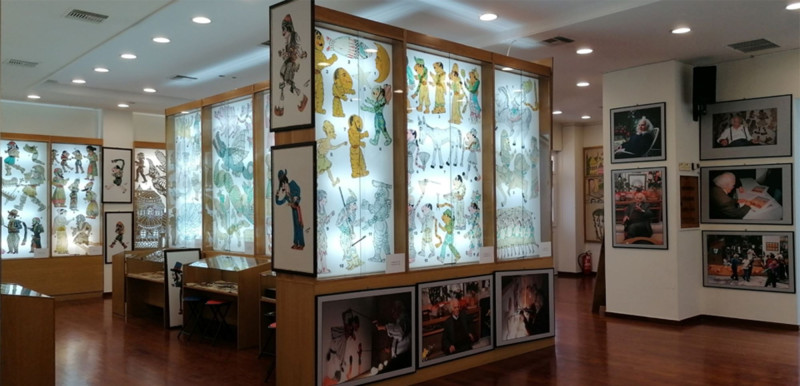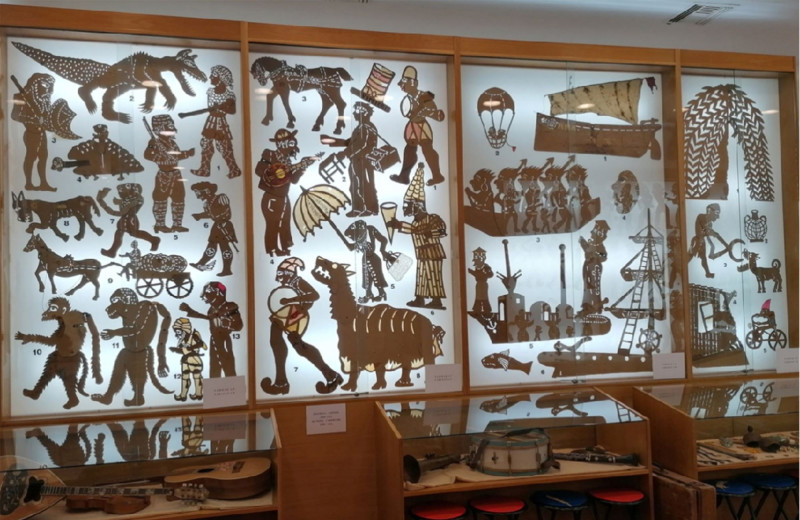The Collection of the Spathairi Shadow Theater Museum is now protected by the Ministry of Culture
The 465 objects that make up the collection of the Spathairio Museum of Shadow – Legal Entity Public Law – of the Municipality of Maroussi are now protected as newer monuments.
According to a statement, the Ministry of Culture decided to designate them as newer monuments as they are Unique and rare evidence of the history of shadow theater in Greecethe historical and social conditions of their creation and its protagonists, as well as the prominent contribution of Eugene Spatharis and his father, Sotiris Spatharis, to the evolution and promotion of Karagiozis in modern Greece.
The objects, exhibits of the permanent collection of the Spathario Shadow Theater Museum, are a donation by Eugene Spatharis, in 2003, to the Municipality of Maroussi.
They are mainly Eugene’s works, and there are many earlier father Sotiris, as well as objects from the World Shadow Theater.
According to the Ministry of Culture, the exhibits at the Museum relate throughout the course of Eugene Spatharis’ work, from his first steps with his father, in the 1930s, to the end of his life in 2009. The The collection is recorded by the Museum’s director, Menia Spatharis, daughter of Eugene Spatharis.
The role of the Spathario Museum is considered particularly important as it helps to protect the collections of Eugene and Sotiris Spatharis, dating from 1894. In 2000, the annual shadow theater festival was established there, “Spatharea”, Participation of remarkable karagiozes, both from Greece and abroad.
The collection includes the following sections:
– The first section includes figures made of cardboardwhich was their main material in the early stages of Karagiozis in Greece, but later. In total, it includes 87 figures and stage sets by Sotiris and Eugene Spatharis, made between 1930 and 1972. Among them the first “television” Karagiozis, aired in 1966, the first year of operation of the Greek Experimental Television Station of the National Foundation ( Eh).
– The second section includes leather works -18 Basic figures of Eugene Spatharis between 1935 and 1980- which was used as an attempt to present color to the figures through the beard, since this material is permeable to light allowing the projection of colored forms.
– In the third section they are presented gelatin replacing the carved cardboard and skin. The introduction of the new material was brought to Greece by America by Karagiozopis Theodoropoulos around 1923. It was later replaced by plastic. The selection of the new material also serves to adapt Karagiozis to the needs of his television presentation, as in 1979 the Secam Color Image System began to be broadcast in Greece. Most issues in this section come from Greek mythology, history and politics.
The last section concerns the objects in the showcases, in which some (objects) are used as special effects in performances, such as musical instruments, material, figures from foreign shadow theaters, books, posters and journalistic articles, etc.
Karagiozis in Greece and the contribution of Spatharis family
The shadow theater has its roots in ancient Greece. In Kaviria and the Eleusinian Mysteries, which were ritual, the shadow that emphasized the supernatural element of mysteries played a very important role.
OR first written testimony For Karagioz dating to August 18, 1841. He appeared in the last quarter of the 19th century, in Epirus, to develop in Patras, through innovations brought about by the Karagioz Mimaros, by turning Karagiozis into a Greek family theater.
The students of Mimaros enriched the shadow theater and handed the art to Sotiris Spatharis, Antonis Molla and Christos Haridimos.
THE Sotiris Spatharisfather of Eugene, was born in 1892 in Santorini and grew up with his adoptive parents in Metaxourgio.
It was a decisive moment in his life when he watched a Karagiozis performance by Karagiozis Yiannis Brahalis. Then he realized that he wanted to do professional in his life. He began to fanatically watch the performances of all the important karagiozes of that time and began to give performances himself, while working as a builder.
In the tours he took with him his son, Eugene, who was born in 1924 in Kifissia, who was initiated very early in the art of Karagiozis.
In the 1930s and 1940s Spatharis became the beloved Karagiozois of the artists and intellectuals of Athens. His assistants, always, for the sets and costumes were his wife and son. Sotiris Spatharis’ contribution to the shadow theater was very important. He was the first to introduce Karagiozis the so -called advertising “Recklama”, a characteristic kind of folk painting.
Source :Skai
I am Frederick Tuttle, who works in 247 News Agency as an author and mostly cover entertainment news. I have worked in this industry for 10 years and have gained a lot of experience. I am a very hard worker and always strive to get the best out of my work. I am also very passionate about my work and always try to keep up with the latest news and trends.












